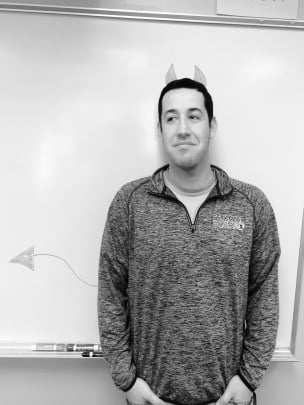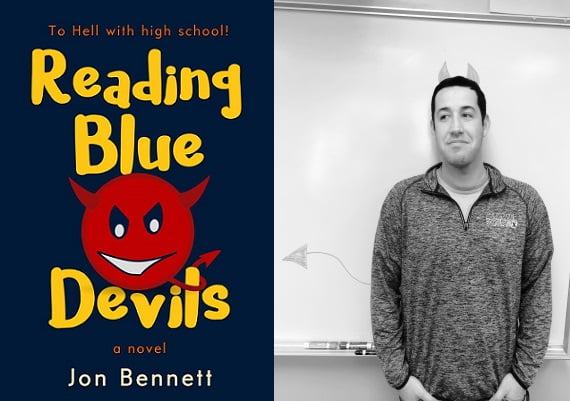
Why the high school setting is a challenge to Write
High school. Two words that represent four or more years of our lives. The best of times and the worst of times. The age of wisdom. The age of foolishness. The season of light. The season of darkness. The spring of hope. The winter of despair. The fall of rationality. The summer of hormones. Presenting a story in this setting is fraught with many challenges, pitfalls, and distinct joys.
On one hand, just the mere mention of the linoleum floors, locker-lined hallways, and forced school spirit elicits a wide range of emotional reactions from the reader.
Were you stuffed into a toilet as a kid? Or were you the stuffer? Were you the kid hiding in the next stall skipping gym class because of a feigned bowel problem? Or were you the kid that never went to the bathroom because you were too stressed to miss a second of instruction because a dip in grades could mean a dip in your resume and, thus, a missed chance at your dream school all because you couldn’t squeeze your sphincters tight enough? Or were you one of the faceless bathroom-goers that cycled through the school bathrooms with little notice (except that one time after Taco Tuesday)?
On the other hand, the implications of the high school setting are profound, especially in this time of stratification in the education system between public and private and charter, rich and poor, White and non-White. It’s a topic that must be handled with a level of critical care and nuance. It’s a big responsibility.
On the third hand, teenagers are goofy, hilarious, problematic, pathetic, unique, annoying, resilient, angelic, frothing beasts. Working with them daily has greyed my hairs and wrinkled my face, much like ’08 Obama turned ’16 Obama. When I explain teaching to those not in the education field, I equate it to wrangling a litter of puppies for a single snapshot. In this case, it’s not a photograph but a single standardized test. Writing about teenagers is the same frantic task.
Presenting this world, one that we almost all go through—yet have a wild range of unique experiences—is a challenge. And doing justice to the selfless staff and brilliant students is a burden I didn’t expect to feel so strongly as I progressed in my novel.
You see, teenagers are simultaneously complex individuals and walking clichés. They are partially like the vomit-worthy caricatures in most YA novels, minus the blood-sucking (seriously, though, how many high school vampire books do we need?). But then they are also indescribable because they, after all, are impulse driven, cause-and-effect ignorant, hormone saturated beings. They are grappling with their identity and aspirations daily, and they can be influenced by anything small or big.
As a writer and a teacher, I am baffled by the adolescent mind most days. I’d have an honor roll student, who would write a brilliant analytical essay on a Monday, get suspended for fighting over a bag of skittles on Tuesday. I’d have a student who tried to set his desk on fire step in to prevent a student he didn’t know from getting beaten to a pulp. The only certain thing I could expect from students is that most of them will come begging for extra credit the day before grades are due.
So if I put these teens into neat little boxes in my story (jocks, nerds, goths, cheerleaders, losers, winners, etc), I will be succumbing to the same narrow-minded categorization we authors like to self-righteously preach against. But, darn it, they actually self-segregate pretty quickly and pretty distinctly. Thus, the characters carry a “type” that can be easily identified by those of us who have gone through high school. I hope, though, they also carry a distinct individuality that transcends the label we would place on them.
Besides avoiding the trope of high school hierarchies, I wanted to capture the racial and intellectual tension of high school in America. I taught for six years in Chicago at schools that were entirely Black and Latino. Not sure if you can tell through the rugged handsomeness of my picture, but I am White—as white as the filling of a Twinkie. It took me a semester, maybe less, to realize the gap in knowledge that I had coming into my position as teacher. And though I believe I have a level of cultural competence, even after six years in the setting, I concede that I will never fully understand the experience of my Black and Latino students (and staff, for that matter).
In fact, universities are finally realizing that their teacher training programs, which are overwhelmingly populated by White educators-to-be, inadequately prepare these suburban teachers for schools with students of color. Here’s why: we (White educators) don’t fully understand the experience of our students; thus, we don’t know how to tailor our instruction; thus, we cause classroom management issues and further deficiencies in achievement because he make assumptions and react based on our own biases. This is especially true for our high school students. It’s part of the reason why we need more teachers of color in our schools. As an author, writing about this humbling truth was both troubling and empowering.
I wanted my book to address the struggle, from my perspective and from the stated perspective of my students and fellow staff. It’s not that White teachers are evil or even bad. It’s just that we need to approach teaching in these schools with the humble understanding that we have much to learn if we want to be effective. Part of the main conflict in the novel revolves around this fight: if the teacher would have just listened, so much of the problems would have been alleviated.
This is the impetus for why I wrote about high school.
I want the reader to see that education should be equitable—that it currently isn’t—and that the change we need in our world starts with the very students we are undeserving. Really, this is the core of why I wrote a story about teaching in high school. It’s also why I chose satire. Humor can lower the threat from the message while subconsciously storming the castle of the intended audience. Satire is like a Trojan Horse, I suppose.
Thus, if I’m able to get some cheap laughs from my slapstick humor and innuendo, that’ll be a nice addition. But at the end of the day, if my students and fellow educators read the novel and say that it captured their struggle, and if I can challenge the thinking of just one person, I’ll count my book as a success.
Writing about high school is hard. You don’t need to be a teacher to do it justice. However, you do need to look beyond your own educational experiences and listen to the stories of others when building the setting.
Jon Bennett is the author of Reading Blue Devils, which is also the book I am currently reading (and greatly enjoying.) See my Teaser Tuesday post for this book here. Find a blurb, bio and links below!
Amazon Blurb:
To Hell with high school! The American education system is turned inside out when a frustrated teacher incites his students to stage an uprising. In a poor suburban community in southern Ohio, Dieter Vogel is a failing English teacher at a high school populated predominately by minority students. He is bullied by the basketball coach, neglected by the principal, ignored by his crush, Esther, and pressured to workout with Jose, the art teacher. At the end of the first day back after summer break, Dieter is visited by Satan, who takes the initial form of a Twinkie. Satan convinces Dieter to overthrow the school mascot, Gretel the Pretzel, so that the Devil can take its place. Dieter is promised Esther’s love and the position of principal in return. All Dieter has to do is follow the Devil’s advice and use classic literature to manipulate the students into a racially charged frenzy against the mostly white staff.
Author Bio:
A born and bred Midwesterner, Jon Bennett graduated from St. Xavier High School in Cincinnati and went on to Miami University. He spent a year pretending to be a business major until his love of English kicked down his door and demanded attention.
After receiving his Masters Degree in Teaching Language Arts, he student-taught at a secondary school in Belmopan, Belize. From there, he spent 6 years teaching in Chicago’s public schools, where he met some of the most inspiring, frustrating, wonderful students and faculty in the world. It was in Chicago, in lane #2 of the local Bally’s Fitness swimming pool, that he met his brilliant, talented and much-hotter-than-him, future-wife Nicole. During the final summer of their stay in Chicago, Nicole gave birth to their daughter Charlotte, who is already cooler and more adventurous than her father.
He currently lives and works in Southern California.
Author Links:
This post contains affiliate links to Amazon.





2 thoughts on “*Guest Post* Why the high school setting is a challenge to Write by Jon Bennett @jbennett830 Author of Reading Blue Devils http://amzn.to/2IHeuAv”